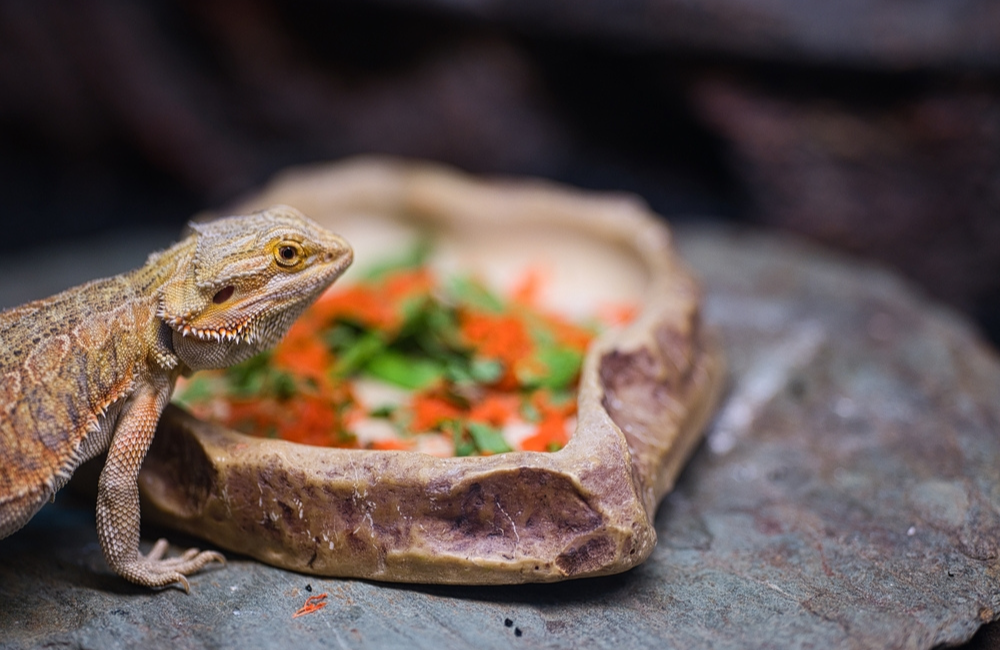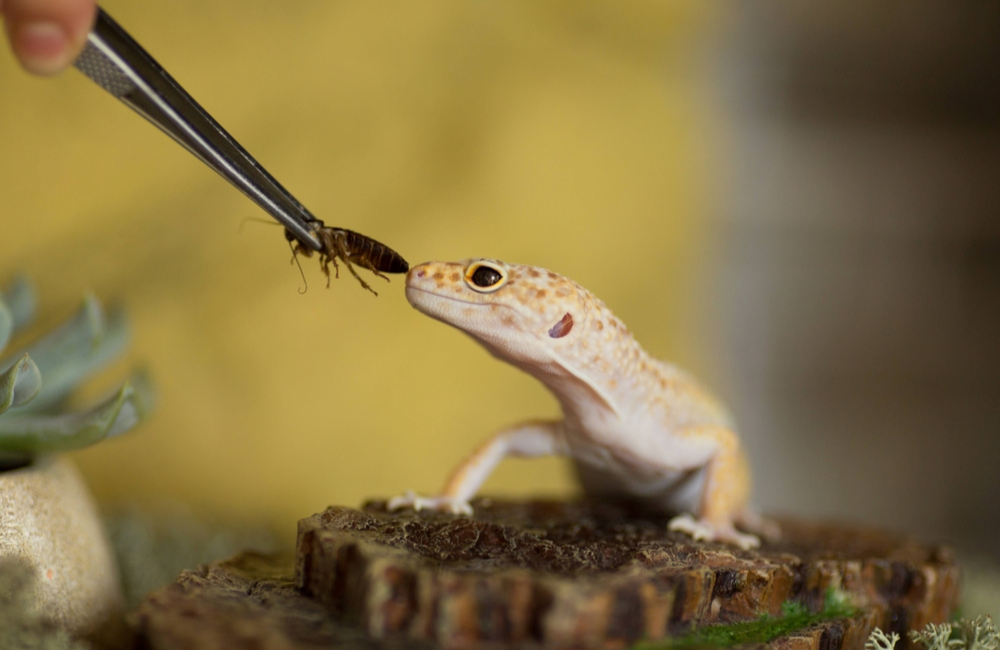What to do if your reptile pet is a picky eater?
Has your pet reptile turned into a picky, finicky eater? Sometimes reptiles become choosy about what they eat. When that happens, it's time to put on your detective hat. They can be picky for a number of reasons that have nothing to do with food. Here's a look at what to do (and feed) when you have picky reptile pets.

Try to Figure Out Why Your Reptile Isn't Eating
First, it's important to know if your reptile is simply not eating due to his species' preferences. Many snakes, for example, only need to be fed every seven to 14 days. Offer food too often, and it may go uneaten.
Your veterinarian can tell you if your pet's refusal to eat is a natural part of his lifestyle or a possible indicator of something else. Let's look at five reasons your reptile might start refusing food.
1. Environmental Conditions Aren't Ideal
A big reason for picky eating is that the environmental conditions in your terrarium aren't right for your pet's species. Some examples include: it's too warm or cold, there aren't enough places to hide, the humidity or lighting is wrong, the terrarium's too small, or there's too much foot traffic where the terrarium's located. Each of these can lead to a decreased appetite.
For example, cold-blooded pets living under the wrong ambient temperature might not even be able to digest food properly. Leopard geckos are known to avoid eating when they're cold. Investing in a good thermometer and humidity gauge will help you keep a close eye on conditions. You also want a UV sensor, like the Rapid Sense Decor, to ensure your pet receives the proper UVB levels for optimal health.
A new snake may not have enough hiding spots to feel safe enough to eat. To counteract this insecurity, make sure your decor has plenty of dark, secluded spots.
Even handling your pet wrong can lead to stress and picky eating.
Dehydration from not having easy access to water can also cause your pet to be finicky — especially if you have a leopard gecko. Make sure you have shallow water dishes for bathing and drinking easily accessible in your terrarium.

To ensure you're creating the proper habitat for your pet, check out our Ultimate Guide to Heating and Lighting. You can also find bedding, habitat, and lighting and heating guides for specific species here.
2. Terrarium Roommates Aren't So Friendly
The problem can even be as simple as having more than one critter in the same terrarium, and they don't get along. Maybe one eats all the food first, or different pets are fighting. This can make mealtime highly uncomfortable. In these situations, giving your pets their own space can be very helpful. The Zilla QuickBuild Terrarium is a sleek, sturdy habitat you can assemble in less than 10 minutes. These terrariums make it easier to house multiple reptile habitats in your home.
3. Health Issues
Unfortunately, health issues can also lead to picky eating. Dental problems, parasites, viral infections, foreign objects in the stomach, diseases, stomatitis, and other issues can lead to your pet's refusal to eat. That's why you need to discuss any behavioral changes with your veterinarian.
4. Seasonal Changes and Shedding
It could also be something more benign. Some reptiles, like snakes, eat less when they're shedding. Reptiles may also eat less during the winter because they slow down or hibernate in the wild at that time of year. Bearded dragons, for example, tend to slow down as daylight hours decrease. This is called brumation, which refers to how some reptiles, like bearded dragons, slow down and become more sluggish when the months are cooler and the daylight hours are shorter. It's a process that's actually quite similar to hibernation.
5. Issues with the Food or Mealtime Itself
The reason for picky eating can also be simply related to how you handle mealtime itself or the type of food you choose. Perhaps you're using the wrong food for your pet's species (some pets prefer live food, while others prefer veggies). Maybe the food is the wrong size, or you have an inconsistent routine causing problems. Keeping a feeding and weight journal can help you better analyze the situation.
What to Feed Picky Reptiles
Once you've ruled out health issues and other factors, try getting a little creative about feeding time by looking into the suggestions below.
1. Make sure your pet has a balanced diet appropriate for his species
Reptiles that don't get the vitamins and nutrients their particular species needs can become picky eaters because they feel stressed. And not getting the right minerals and vitamins can make them very sick. Make sure you provide the right nutritional balance, whether your pet needs omnivore food or fresh veggies. Providing variety in their diet goes a long way toward nutritional balance. You can also supplement with vitamins and minerals. Consider using sprays like the Calcium Supplement Food Spray or the Vitamin Supplement Food Spray. Consult your veterinarian to ensure you're using the right mix of supplements along with food.
2. Feed your pet the right type of food for his species
Part of a balanced diet also includes the proper method of feeding that your species prefers. Nocturnal reptiles, for example, may not want to eat during the day. Snakes that are fed obese rats might become anorexic. Some snakes may even prefer their food to move. But be careful — live rodents can bite back!
3. Try changing up the food you offer
Try new foods your reptile could find tastier. Switch up your snake's all-rodent diet with de-thawed chicks or quail, for example.
Test a variety of flavors, like a cricket drink, a tasty fruit mix, river shrimp, or floating treats that may be more enticing to turtles. Just make sure whatever you choose is right for your species, like fortified pellets for bearded dragons versus fortified pellets for land turtles and tortoises.
You can also try warming up food a little to give it a stronger scent (like warming a little tuna for a cat). Check with your veterinarian first to make sure the food's safe for your pet's species.
Don't Worry — Your Pet Reptile Will Eat Again
It's never easy to see a beloved pet turn down food. The reasons can be wide-ranging, from health problems to simple seasonal changes or even choosing the wrong kind of food for your pet's species. Once you've ruled out any underlying health issues, make sure your environmental conditions are ideal, then try a little variety to spice things up.
